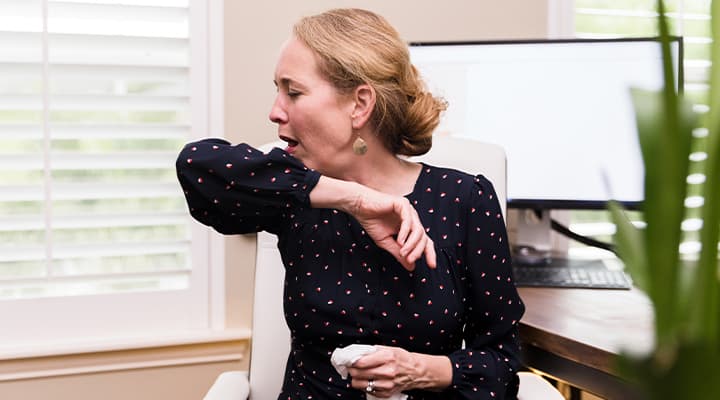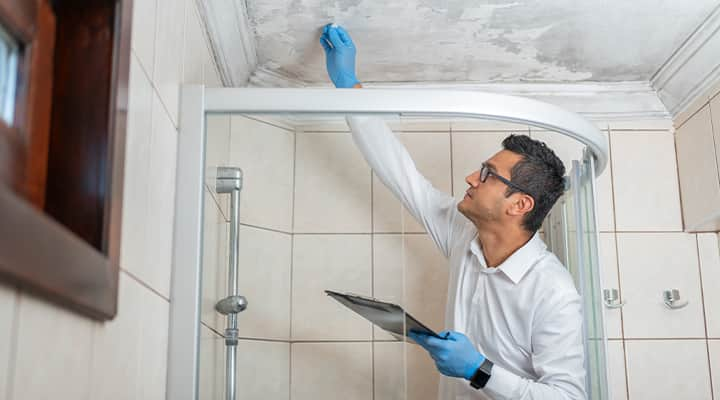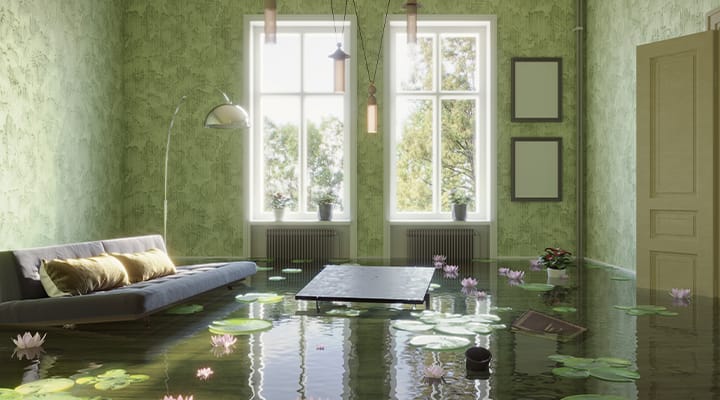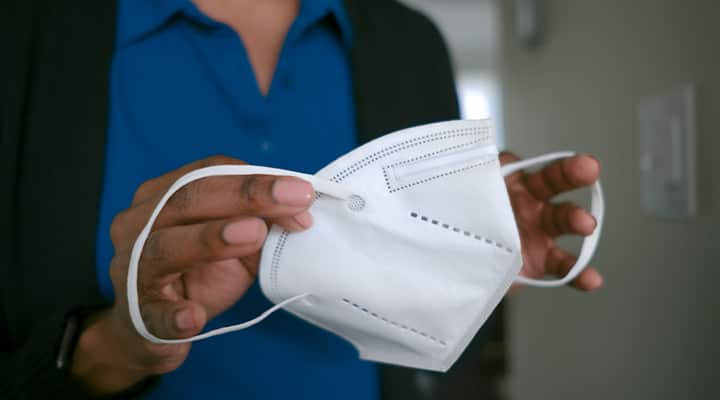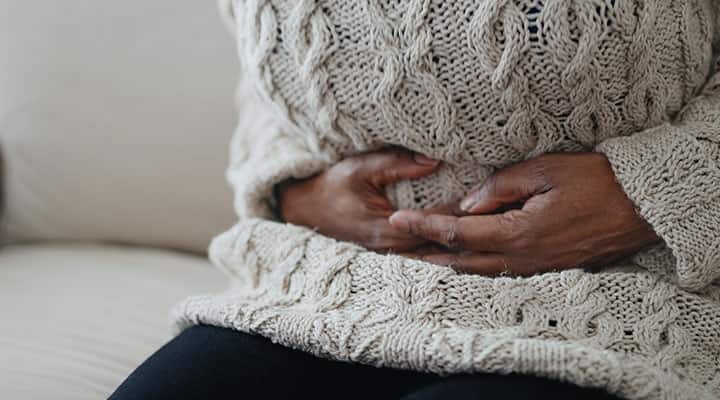
Mold Exposure: Sources and Common Symptoms
Published: May 2024
You've probably heard of the horror stories: mysterious symptoms, lingering illness, out-of-the-blue asthma attacks. The culprit in these tales is worse than a monster under your bed. It is the shadows within your walls: mold.
Because mold can be years in the making, it can grow quietly from a minor matter to a menace right under your nose. (And your nose is likely where you will feel it the most.)
So how can you tell if you've been exposed to mold and protect your environment from a fuzzy invasion? We talked with expert Dylan Blaiwes, who manages lab testing at Life Extension, about the best ways to detect and defend against mold exposure.
"Mold exposure is often overlooked as a source of symptoms" of illness, Blaiwes said. But there's good news: with the right tools, you can find out if mold is what's making you sick so you can start feeling better faster.
What happens if you breathe in mold spores?
Although we like to think the air we breathe is clean and fresh, air carries a lot more than carbon and oxygen—including mold spores. Mold usually refers to a spore-forming fungus that develops a characteristic fuzzy, dusty, or colored appearance as it grows. Of the millions of known mold species, only a few of the commonly encountered indoor species produce mold toxins, or mycotoxins, with potentially harmful effects, Blaiwes said. These include several species of Aspergillus and Penicillium, Candida auris, Chaetomium globosum (a common allergenic mold), and the well-known Stachybotrys chartarum, also known as black mold.
What effect those mold spores will have in a body depends on a person's immune health and the amount of mold spores they inhale. Some people are much more sensitive to mold than others, Blaiwes pointed out.
A healthy person may breathe in spores for several hours while working (or working out) inside a building with mold, and they will not experience symptoms at all. Another person who is sensitive to mold, or who has a respiratory condition such as allergies, asthma or emphysema, may experience symptoms from a much shorter exposure.
Reactions can also vary depending on the mold species and strain and the duration of exposure (several hours a week vs. 8-10 hours every weekday). The more extensive the mold contamination, the more likely it is to lead to health problems.
Where does mold most commonly grow?
Mold can be sneaky—and it likes the dark. It can grow anywhere that has moisture and organic material, which makes everything from plastic and plants to carpet and drywall fair game. Direct sunlight kills mold and spores, so mold sticks to shady places. Dank corners are a favorite.
Once it gets a foothold, mold spreads, releasing spores that can be carried into your home or workplace in the air, in water, or even in the fur of your pet.
When checking for hidden mold in the home or workplace, often using your nose is a good place to start, Blaiwes said. Mold causes a smell, so if there is no visual evidence of mold growth, a noticeable musty odor in a certain room or increased respiratory symptoms in that space might be your best clue for where to test.
Top sources of mold exposure
Water-damaged buildings.
Mold can grow quickly in any damp location, and water-damaged buildings are a major source of exposure. Often just breathing the air in a water-damaged building is enough to result in detectable mycotoxin exposure.Basements and bathrooms.
Rooms that tend to gather humidity or have obvious signs of moisture accumulation, like bathrooms and basements, could be vulnerable to mold growth. Windows, air conditioning units, refrigerators, and dryer vents can all be places for mold to grow as well.Drywall.
Unfortunately, other sources of mold growth aren't so obvious. When a small water leak occurs behind a wall, it may be a hidden source of mold exposure. Drywall can act as a source of energy for black mold to thrive on. Once mold starts colonizing, its spores and mycotoxins can spread easily throughout a building via the ventilation system.Furniture.
It isn't just your walls and air conditioning systems you need to worry about. Mold can also grow in floors, fabric and upholstery, so couches and carpets damaged by water leaks or flooding should be discarded.
How to Prevent Mold Growth
The best way to prevent mold in your home or workplace is to eliminate its vehicle for growth: humidity. Do your best to avoid the buildup of moisture inside; keep your home clean and dry.
The CDC recommends cleaning your home with a bleach solution, which can kill mold. You should also remove and replace water-damaged building materials and furniture as soon as possible after a leak or flood.
What are the symptoms of mold exposure?
Most symptoms of mold exposure are caused by allergic reactions and tissue irritation from mycotoxins, Blaiwes said. Although most mold symptoms are minor, exposure can lead to illness and severe infections, usually in people already facing immune challenges. The most common reactions include:
- Runny nose and sinus congestion
- Eye irritation, such as itching or watery eyes
- Wheezing, coughing or shortness of breath
- Throat irritation
- Skin irritation, such as a rash
- Headache
More serious reactions, including neurological and inflammatory immune responses, have been reported in those with respiratory mold exposure, Blaiwes said. Symptoms from impaired vision, fatigue, sleep issues, tingling and dizziness to headaches and mood changes have all been reported in those exposed to mold from water-damaged buildings.
Mold has also been linked to chronic fatigue syndrome and other mystery illnesses, such as Sick Building Syndrome. Finding out if you've been exposed could be life-changing for these individuals, Blaiwes said.
Can black mold grow in your lungs?
This nightmare scenario is much less likely than popular entertainment would have you believe—but fungal colonization can occur in individuals who are severely immunocompromised, Blaiwes said. Even so, it is unlikely that breathing mold spores in would lead to immediate colonization in the lungs or elsewhere. Someone would have to be exposed to a lot of spores and be immunocompromised or have existing respiratory health concerns (like emphysema or sarcoidosis) that predispose them to pulmonary infections.
According to Blaiwes, problems that occur from mold exposure are not usually from mold growing inside a person. Instead, they are an allergy to molds, or they are reactions to mycotoxins—which are much more likely to circulate through the air than black mold.
One exception, he noted, is aspergillosis, a rare respiratory mold infection. Some species of Aspergillus can colonize the lungs, especially in individuals with existing pulmonary health concerns, leading to serious health complications. Even then, he said, susceptibility is important, because most people who breathe those spores do not get sick.
How to test for mold exposure
Worried about what might lurk in your home's hidden places? You can test both your body and your environment for mold exposure.
Urine test:
This easy, non-invasive test measures urinary mycotoxin excretion to quantify the body's exposure to the toxins produced by mold. These toxins, which are a common cause of mold's immune system symptoms, are handled by the liver and eliminated in urine. They are often eliminated in a few days, although some take several weeks, so a urine test is a good way to test if you are actively exposed to mold, Blaiwes said.Blood test:
Suspected allergic reactions and inflammatory response to mold can be measured with a respiratory allergy panel, an at-home blood spot test for mold-specific IgE antibodies and other non-specific inflammatory markers. This test measures if you have mold allergies, which would make symptoms worse if you are being exposed to mold, but it does not confirm recent mold exposure.Environmental test:
If mold isn't visible, a test for specific types of mold and mycotoxins can help establish environmental or occupational exposure. Because mycotoxins easily circulate through a building's air conditioning system, one of the best places to test for mycotoxins and mold is on the air conditioner filter itself, according to Blaiwes. The air filter should be at least 1 month old for the best sample, but if the filter was replaced in the past month, you can swab a dusty ceiling fan or air conditioning/heater vent instead. You can even send a piece of an air filter, carpet or drywall for analysis.A combination test:
Combining urine mycotoxin testing with an environmental test is an ideal approach, Blaiwes said. A combo test helps evaluate the body's mold and mycotoxin exposure and identify where the exposure may have occurred.
Life Extension's Wellness Specialists can help you understand your test results once they are returned to you. The hotline is open daily at 1-800-226-2370.
However you approach it, uncovering the cause of mold symptoms is key. Mold testing can help you identify and prevent mold growth and rest easier about the health of your family and home.
References
- Campbell AW, et al. "Neural autoantibodies and neurophysiologic abnormalities in patients exposed to molds in water-damaged buildings." Arch Environ Health. August 2003. https://pubmed.ncbi.nlm.nih.gov/15259425/
- Fosses Vuong M, et al. "Aspergillosis." February 2023. https://pubmed.ncbi.nlm.nih.gov/29489184/
- Gray MR, et al. "Mixed Mold Mycotoxicosis: Immunological Changes in Humans Following Exposure in Water-Damaged Buildings." Archives of Environmental Health An International Journal. August 2003. https://www.researchgate.net/publication/8561911_Mixed_Mold_Mycotoxicosis_Immunological_Changes_in_Humans_Following_Exposure_in_Water-Damaged_Buildings
- Habschied K, et al. "Mycotoxins-Biomonitoring and Human Exposure." Toxins (Basel). February 2021. https://www.ncbi.nlm.nih.gov/pmc/articles/PMC7913644/
- Kespohl S, et al. "What should be tested in patients with suspected mold exposure? Usefulness of serological markers for the diagnosis." Allergol Select. March 2022. https://www.ncbi.nlm.nih.gov/pmc/articles/PMC8982061/
- Straus DC. "Molds, mycotoxins, and sick building syndrome." Toxicol Ind Health. October-November 2009. https://pubmed.ncbi.nlm.nih.gov/19854820/
- Tischler BY, Hohl TM. "Menacing Mold: Recent Advances in Aspergillus Pathogenesis and Host Defense." J Mol Biol. October 2019. https://pubmed.ncbi.nlm.nih.gov/30954573/
- "Aspergillosis." Mayo Clinic. January 2022. https://www.mayoclinic.org/diseases-conditions/aspergillosis/symptoms-causes/syc-20369619
- "Basic Facts about Mold and Dampness." Centers for Disease Control and Prevention. November 2022. https://www.cdc.gov/mold/faqs.htm
- "Sick Building Syndrome." ScienceDirect. https://www.sciencedirect.com/topics/pharmacology-toxicology-and-pharmaceutical-science/sick-building-syndrome


